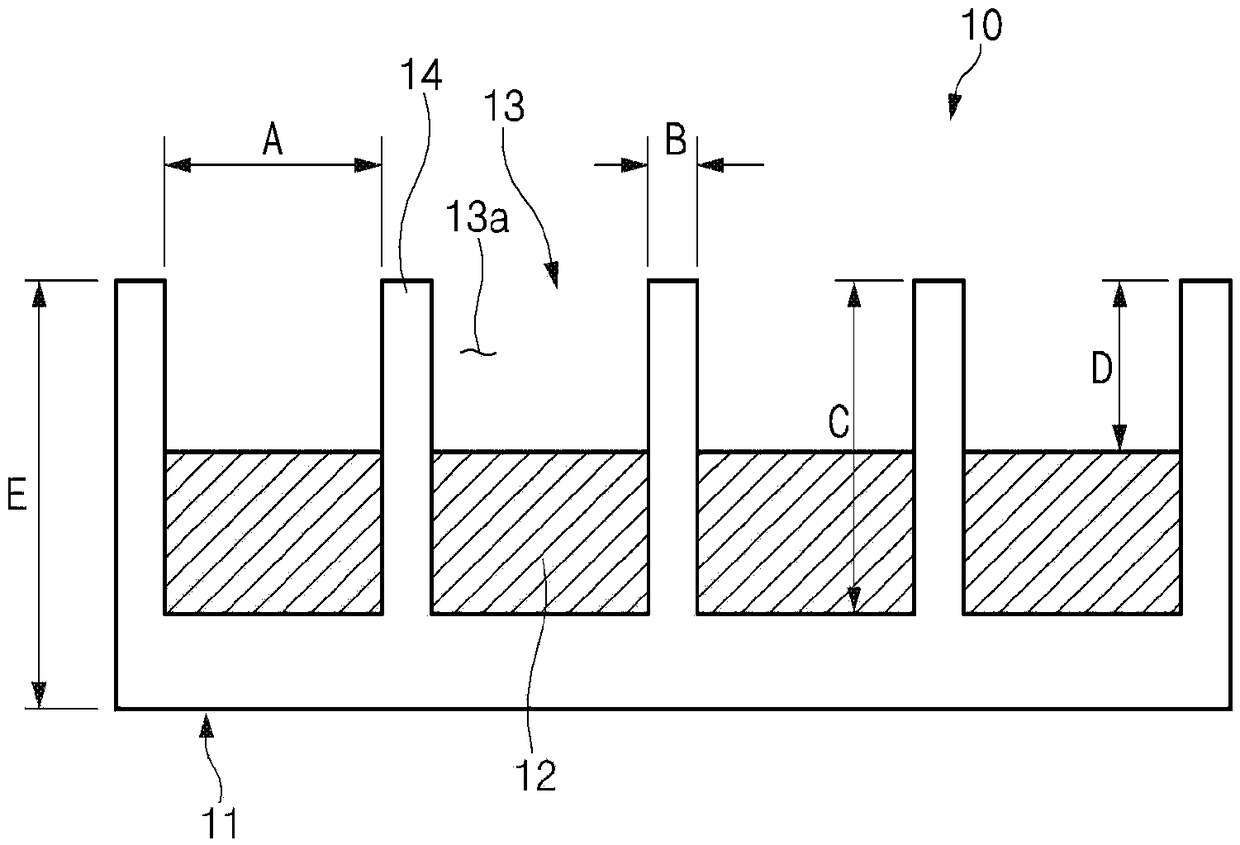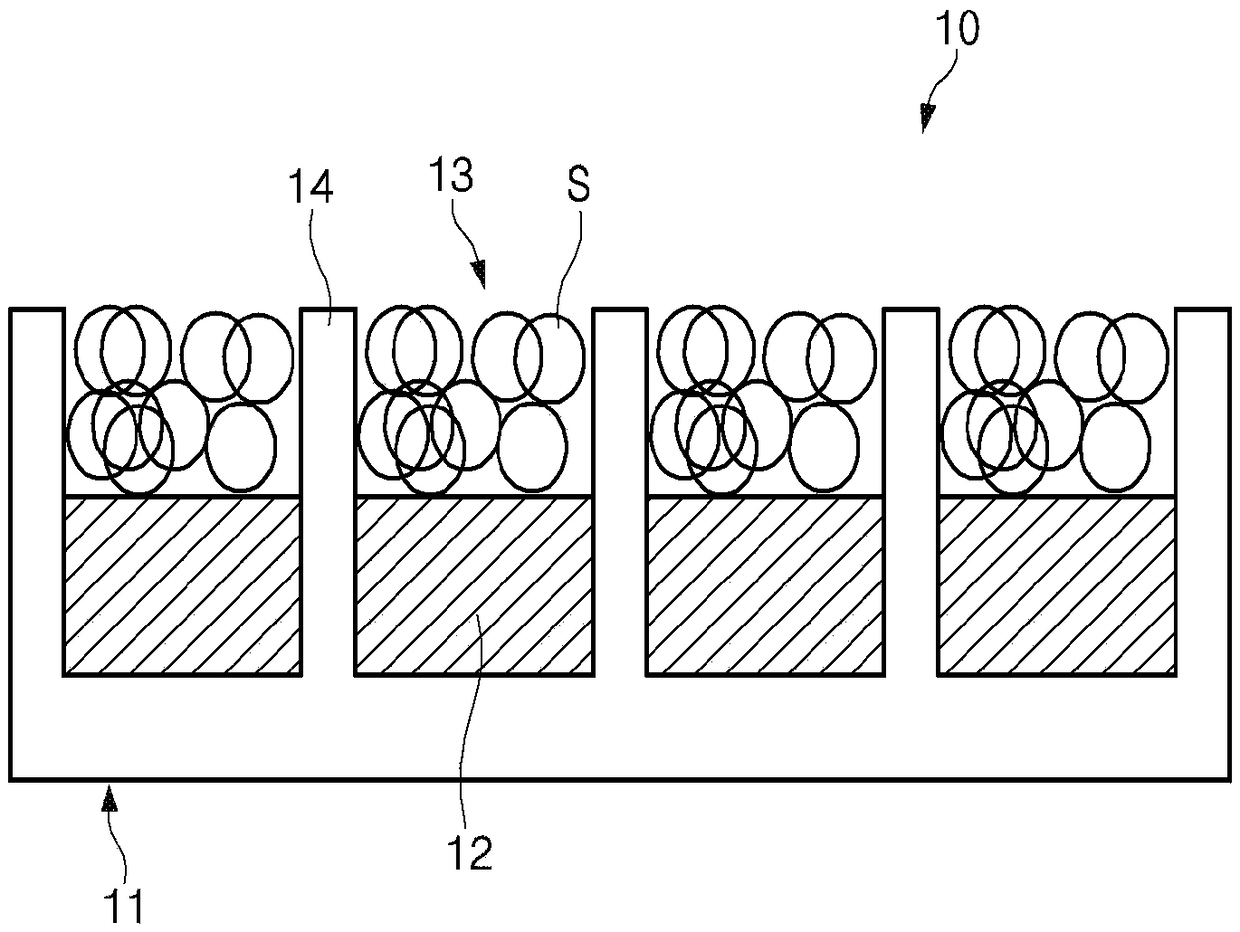Negative electrode for secondary battery
A secondary battery and negative electrode technology, applied in battery electrodes, negative electrodes, lithium batteries, etc., can solve the problems of deterioration of battery life characteristics, difference in current density, uneven current distribution, etc., and achieve the effect of preventing life shortening
- Summary
- Abstract
- Description
- Claims
- Application Information
AI Technical Summary
Problems solved by technology
Method used
Image
Examples
Embodiment 1 to 10
[0056]
[0057] When the width of the anti-stratification headers 13 is A, the distance between the anti-stratification headers 13 is B, and the depth of the anti-stratification headers 13 is C, it can be constructed under the conditions shown in the table below Lithium secondary battery.
[0058] [Table 1]
[0059]
experiment example
[0061] The apparent capacity and capacity retention rate when the patterns in Table 1 were applied are shown in Table 2 below. In addition, manufactured in which nickel cobalt manganese (NCM) was used as the positive electrode active material, lithium metal was used as the negative electrode active material, PE separator was set as the separator and ethylene carbonate / ethyl methyl carbonate / dimethyl carbonate (EC / EMC / DMC) 1M LiPF6 VC 0.5% by weight as electrolyte cells for evaluation.
[0062] [Table 2]
[0063]
Apparent capacity (mAh)
Capacity retention rate (%), the 200th cycle
Example 1
5.25
88.57
Example 2
5.24
86.65
Example 3
5.26
84.15
Example 4
5.28
86.57
Example 5
5.28
70.57
Example 6
5.28
76.57
Example 7
5.28
56.57
Example 8
5.28
46.57
Example 9
5.29
35.78
Example 10
5.21
25.23
Comparative example 1
5.24
20.4...
PUM
| Property | Measurement | Unit |
|---|---|---|
| size | aaaaa | aaaaa |
Abstract
Description
Claims
Application Information
 Login to View More
Login to View More - R&D
- Intellectual Property
- Life Sciences
- Materials
- Tech Scout
- Unparalleled Data Quality
- Higher Quality Content
- 60% Fewer Hallucinations
Browse by: Latest US Patents, China's latest patents, Technical Efficacy Thesaurus, Application Domain, Technology Topic, Popular Technical Reports.
© 2025 PatSnap. All rights reserved.Legal|Privacy policy|Modern Slavery Act Transparency Statement|Sitemap|About US| Contact US: help@patsnap.com



